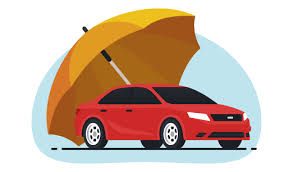For homeowners who want basic protection, an H03 policy will suffice. But for homeowners looking for the most protection and the highest coverage limits, a premium H05 policy is the best bet.
With most home insurance, such as an H03 policy, you are required to prove that your personal property claim happened due to one of the named perils (insurance-speak for specific dangers) listed on your policy. However, with a premium policy, such as an H05, the onus is on the insurance company. The only way you won’t get reimbursed for personal property damages is if the peril is specifically exempted from your policy.
KEY TAKEAWAYS
- The difference between the H03 policy and the H05 policy for homeowners is what perils or dangers to your home are covered.
- A basic H03 policy covers all risks to the building structure, including the outside of the building; personal property, including everything in your home, is only covered if it falls under the policy’s named perils.
- With a premium H05 policy, all risks to the building structure and personal property are covered, but all personal property, or everything in your home—unless it falls under the list of perils that are specifically excluded.
- H03 policies are less costly than H05 policies because they cover less, and put the burden of proof of a claim on the homeowner.
- For most homeowners, H03 policies are sufficient. HO5 policies benefit those with a lot of high-value belongings and expensive personal property.
Basic H03 Policy vs. Premium HO5 Policy
The most common sort of homeowners insurance, an HO3 policy, regards all risk to the actual building structure of your home, meaning you’d be insured for any peril that could happen to the outside of your home.
Peril, in terms of insurance coverage, is defined as something that could destroy or cause damage to your property. A burst pipe, fire, hurricanes, or tornadoes are all perils.
Named perils mean the perils you are covered for that are specifically mentioned in your insurance policy contract. If you are covered for all perils except those mentioned as exemptions, you are getting an open perils policy. All risk is also called “open peril,” because unless a specific peril is excluded you are covered. However, your personal property, the contents of your home (i.e., your stereo, computer, and furniture) are only covered by named perils in an H03 policy.
In an HO5 policy, both personal property and your home are covered under an open perils policy. Thus, if you have a claim due to anything that causes damage to your personal property within your home, you wouldn’t have to prove that it happened because of a named peril. For instance, if your roof develops a water leak and your property is damaged, you do not have to prove that it happened based on a reason covered by your policy, such as hail. If the peril is not specifically excluded, you are covered.
Perils Covered With an HO3 Policy
There are 16 named perils that are generally insured against in a typical H03 (traditional) policy. This covers most incidents that can happen and is good enough that most people end up with this policy in order to avoid higher insurance premiums. Some of the perils that may be included in H03 are vandalism, damage from thawing ice, mold, theft, and volcanic eruption.
Types of HO3 Coverage
Coverage by HO3 insurance policies usually falls into five basic categories: A, B, C, D, and E.
- Coverage A: This refers to the actual physical building you live in and any attached structures, like a porch, deck, or garage. Your home is usually covered on an open peril basis.
- Coverage B: This covers other structures on your property, such as things that are unattached to your home: detached garages, sheds, fences, swimming pools, and tennis courts. Typically, these other structures are insured for up to 10% of your Coverage A amount, though you can increase it.
- Coverage C: This applies to the contents of your home—your furnishings, appliances, and other personal property. Unlike your home, which is covered for open perils, your contents are covered for named perils only—occurrences specifically listed on the policy. If it’s not listed, it’s not covered.
- Coverage D: Commonly referred to as “loss of use” coverage, this applies if your home becomes uninhabitable. It covers the costs of staying in a hotel and any additional living expenses you incur. This coverage is usually on a named peril basis and is either limited to a certain period of time or 10% of Coverage A.
- Coverage E: This is the personal liability portion of your policy—protecting you if something happens to someone else or someone’s property, or other situations where you’d be deemed at fault. Typically, it covers any legal fees or court costs paying the damages you’re responsible for.
Reasons to Get an HO5 Policy
H05 policies do tend to be more expensive than the more standard H03. If you have fantastic credit and the difference in price is relatively small, the investment may be worth it though.
First, HO5 policies give you no fuss, no muss insurance; they are inclusive rather than exclusive coverage for your property and goods. When making a claim, you don’t have to jump through hoops to prove you’re covered; rather, the burden of proof’s on the insurance carrier to say you aren’t.
A more specific benefit of an HO5 is that you are covered in additional circumstances and for the maximum amount (i.e., replacement value) for damage to your personal property. So it is especially invaluable if you own a lot of high-value items.
How to tell if an HO5 is worth it? Go around your home with a pad and paper and write down everything you own. Then, write down what you think each item is worth. Then, go online to find the replacement cost if you had to buy that same item new, today. Total the values and now that you know what your stuff is worth, you can decide whether you need an HO5 policy.
HO5 Exclusions
Before you become a complete convert to the HO5 policy, there are some caveats to consider.
One is that you may not qualify. HO5 policies tend to be for newer homes, or those located in low-risk neighborhoods (nothing in a flood zone or landslide-prone area). High property values help too.
Also, while HO5 policies are more comprehensive, even they don’t cover everything. In fact, there are several common exclusions, as they’re called, including damage due to:
- Earth movement
- Ordinance or law
- Water damage from outside: flood, sewer backup
- Power failure
- War
- Nuclear hazard
- Intentional loss
- Government action
- Collapse
- Theft if the structure is under construction
- Vandalism or malicious mischief if the home is vacant more than 60 days
- Mold, fungus, or wet rot (with some exceptions)
- Neglect, wear and tear, and deterioration
- Mechanical breakdown
- Smog, rust, and corrosion
- Smoke from agricultural smudging and industrial operations
- Discharge, dispersal, or seepage of pollutants
- Settling, shrinking, bulging, or expanding of your home’s foundation
- Infestation of birds, vermin, rodents, or insects
- Animals you own
Questions to Ask About Any Policy
No matter whether you choose an HO3 or an HO5 homeowner’s policy, you should ask your agent or broker these questions:
- What are the exact exemptions? Even if you have an HO5 policy, you could have exemptions—things or situations not covered in your policy—as noted above.
- Is replacement value or cash value covered? If you are covered for replacement value instead of cash value, you are paid enough to buy the item new instead of what the item is worth at the time it is damaged.





